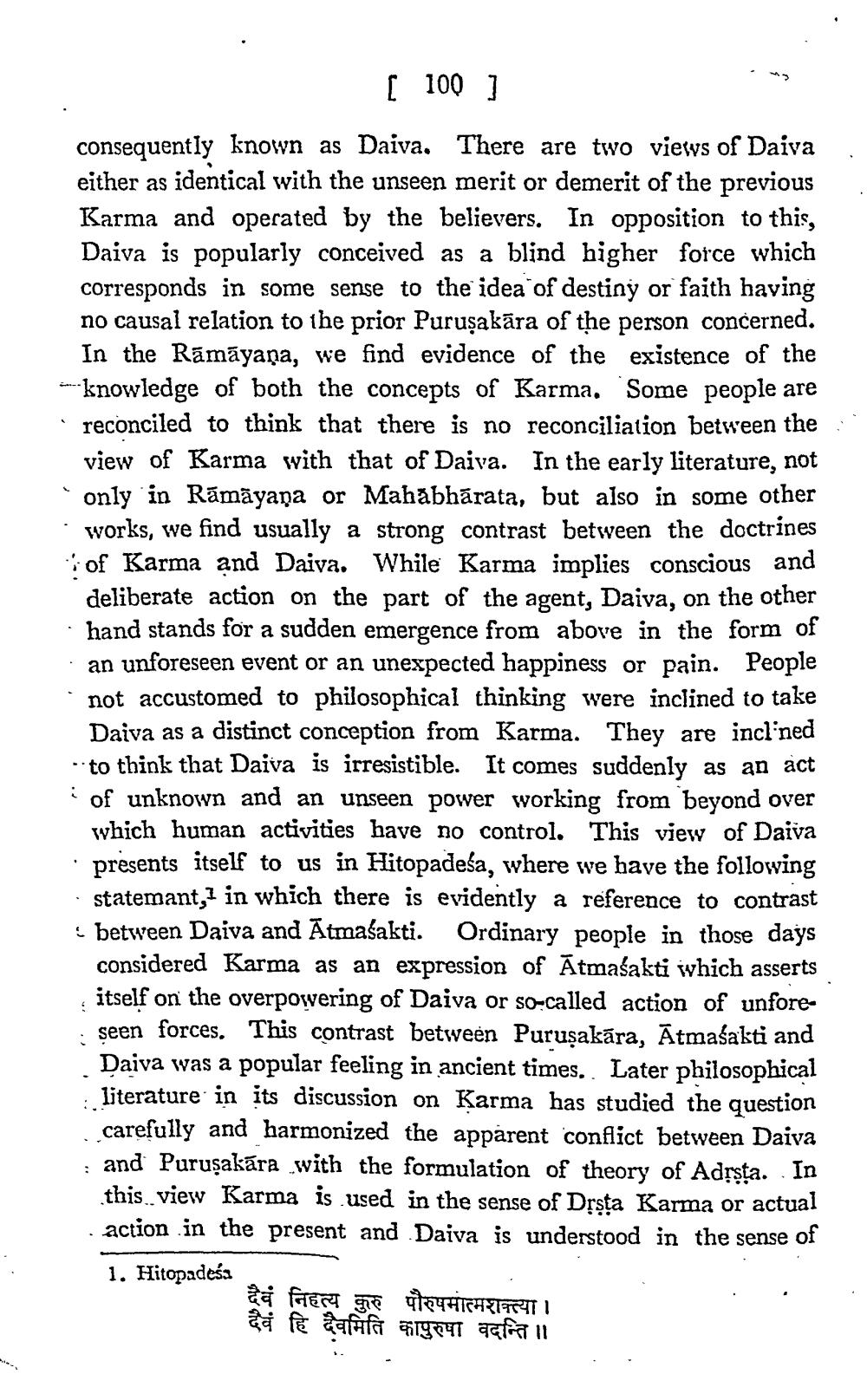________________
[
100 ]
consequently known as Daiva. There are two views of Daiva either as identical with the unseen merit or demerit of the previous Karma and operated by the believers. In opposition to this, Daiva is popularly conceived as a blind higher force which corresponds in some sense to the idea of destiny or faith having no causal relation to the prior Puruşakāra of the person concerned.
In the Rāmāyaṇa, we find evidence of the existence of the ---knowledge of both the concepts of Karma. Some people are · reconciled to think that there is no reconciliation between the
view of Karma with that of Daiva. In the early literature, not "only in Rāmāyaṇa or Mahabharata, but also in some other · works, we find usually a strong contrast between the doctrines
of Karma and Daiya. While Karma implies conscious and
deliberate action on the part of the agent, Daiva, on the other - hand stands for a sudden emergence from above in the form of · an unforeseen event or an unexpected happiness or pain. People
not accustomed to philosophical thinking were inclined to take Daiva as a distinct conception from Karma. They are inclined to think that Daiva is irresistible. It comes suddenly as an act of unknown and an unseen power working from beyond over which human activities have no control. This view of Daiva · presents itself to us in Hitopadeśa, where we have the following · statemant,] in which there is evidently a reference to contrast between Daiva and Ātmasakti. Ordinary people in those days considered Karma as an expression of Ātmaśakti which asserts itself on the overpowering of Daiva or so-called action of unforeseen forces. This contrast between Puruşakāra, Ātmaśakti and Daiva was a popular feeling in ancient times. Later philosophical literature in its discussion on Karma has studied the question
carefully and harmonized the apparent conflict between Daiva : and Puruşakára with the formulation of theory of Adrsta. In
this. view Karma is used in the sense of Drsta Karma or actual action in the present and Daiva is understood in the sense of 1. Hitopadeśa
दैवं निहत्य कुरु पौरुषमात्मशक्त्या। दैवं हि दैवमिति कापुरुषा वदन्ति ।।




